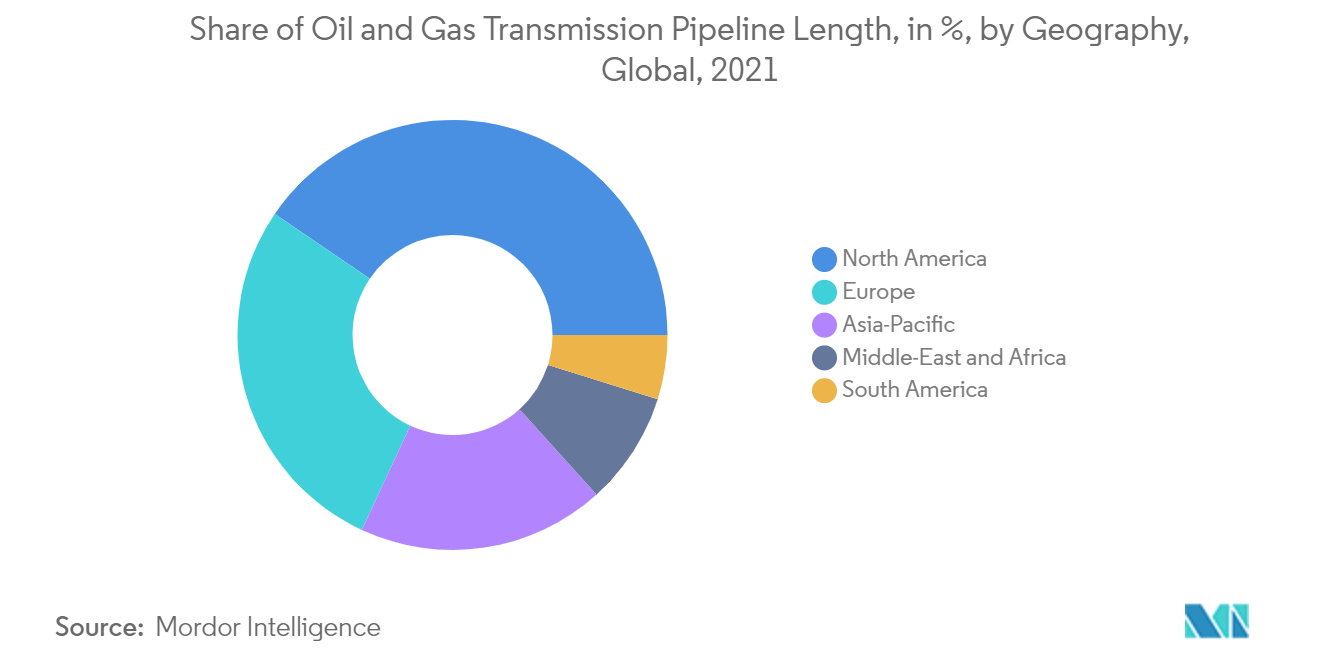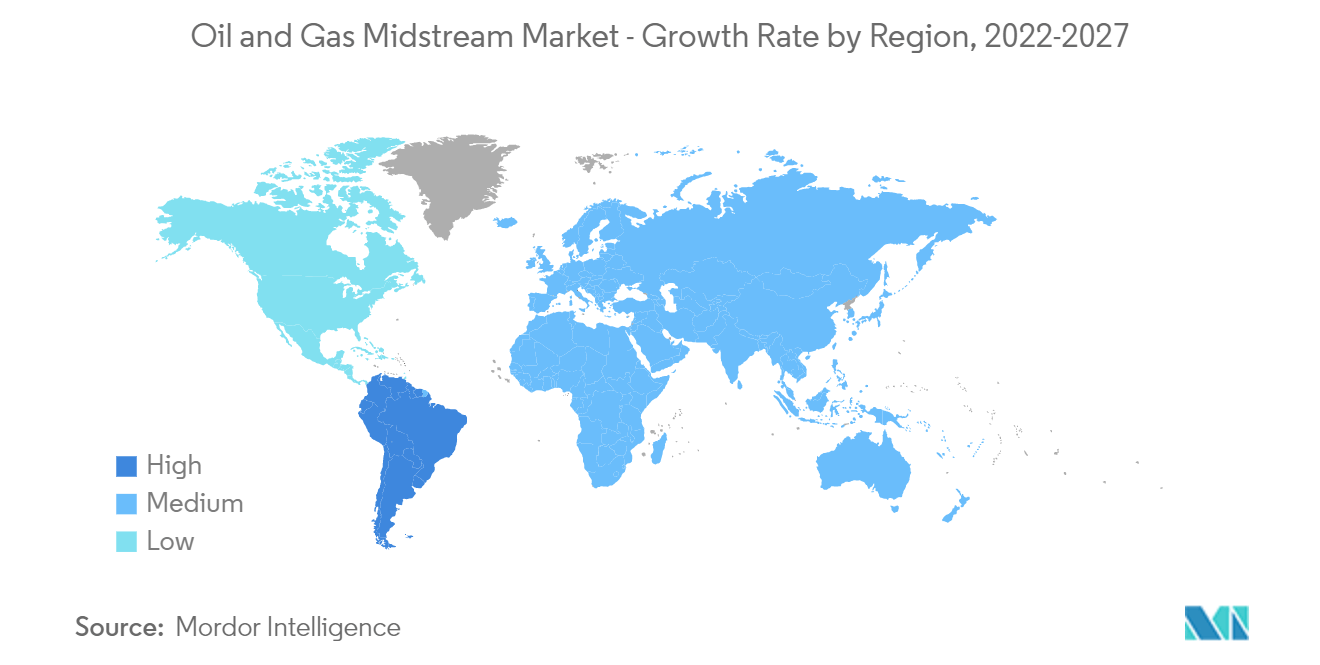Market Trends of Oil and Gas Midstream Industry
This section covers the major market trends shaping the Oil & Gas Midstream Market according to our research experts:
The Transportation Sector to Dominate the Market
- The oil and gas transportation industry is dominated by pipelines. The oil and gas supply in different regions is expected to exceed the existing transportation capacity, requiring expansions and the construction of new pipelines.
- Globally, the rising energy demand has resulted in an increase in new pipeline constructions and transportation facilities as the continuous need for energy demands new oil and gas infrastructure. This increasing energy demand has increased new terminals and pipeline construction, including oil and gas pipelines and transportation, especially in Asia-Pacific (APAC) and Africa.
- For instance, in May 2021, Russia and Pakistan signed an agreement to construct about a 1,100-km gas pipeline worth USD 2 billion by the end of 2023. Further, Russia and India also signed a deal worth USD 40 billion on natural gas exports to India. Russia is a significant exporter of LNG, which presents an opportunity in the pipeline industry for the market players during the forecast period.
- Moreover, the largest market for the oil and gas midstream sector, North America, had its pipeline infrastructure started developing over half a century ago. Hence, a lot of pipelines are old and demand expansion as per the forecasted demand rise for petroleum products and natural gas.
- The new oil and gas exploration and production activities globally, along with an improved and efficient pipelines network for transportation, will significantly influence the market growth during the forecast period.
- Hence, the transportation sector covers the major markets in the midstream sector. Hence, with the increasing transportation sector, the midstream sector is also expected to increase during the forecast period.

South America to be the Fastest Growing Market
- South America is expected to be the fastest-growing market for the oil and gas midstream market during the forecast period.
- South America is home to some of the largest countries globally in terms of proven oil and gas reserves. The region also hosts one of the largest offshore oil and gas markets across the world. Brazil, Venezuela, Argentina, and Colombia are the major countries in the region's oil and gas industry.
- Oil and gas projects, both offshore and onshore, in South America have lower breakeven prices and competitive payback times as compared to similar projects across the world, which makes them more resilient in the current turbulent times. Around 30 offshore oil & gas projects are expected to be given the green light across the region over three years (2021-2023), which will require a cumulative greenfield investment in the range of USD 50 billion. These projects are operated by a mix of national oil companies (NOCs) and major independent companies; further, the increasing pipeline infrastructure, with the development of oilfields, is expected to propel the midstream market in South America during the forecast period.
- For instance, Petrobras is planning to invest around USD 55 billion for the period 2021 to 2025. Of this total investment, 84% is being allocated to oil and gas exploration and production (E&P). The investment of around USD 46 billion in E&P involves approximately USD 32 billion, 70%, in pre-salt assets. This indicates that the upstream oil & gas sector, especially the offshore oil & gas assets in Brazil, is expected to witness significant investments into pipeline infrastructure for crude oil transportation during the forecast period.
- Furthermore, there are three major pipeline projects in Brazil, including both capacity expansion pipelines and newly constructed pipelines. Capacity expansion pipeline includes the Bolivia-Brazil pipeline (GASBOL), which is anticipated to increase the pipeline capacity to an estimated 3.6 million cubic meters by 2022. The new construction of the gas pipeline includes the gas pipeline between Argentina and Brazil, and Sao Carlos, Sao Paulo, and Brazil.
- Moreover, the region has been witnessing growth in the LNG market due to increasing gas demand from countries like Chile, Brazil, and Argentina. Chile, Brazil, and Argentina have been top LNG importers in the region, with imports of 3.7, 3.3, and 1.8 billion cubic meters, respectively, in 2020. In 2020, the entire South and Central American region imported a total of 13.9 billion cubic meters of LNG.
- In March 2021, Bill 4476/2020, which institutes the New Gas Law, was passed by the Chamber of Deputies in Brazil. The bill shifts control away from the state-controlled Petrobras and allow companies that want to build gas pipelines to follow a simple authorization process rather than the previous more complex contract, and gives more power to the energy regulator, the Brazilian National Agency of Petroleum, Natural Gas, and Biofuels. The law is expected to generate significant shifts in the sector, as private companies can quickly get import permits for natural gas along with the third parties that can access LNG terminal infrastructure.
- Therefore, owing to the above points, South America is expected to be the fastest-growing region in the oil and gas midstream market during the forecast period.


